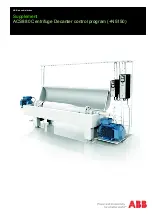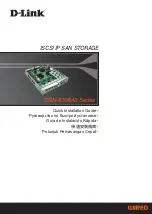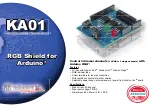
D-Link Unified Access System
Software User Manual
12/10/09
Page 492
Monitoring and Managing Intrusion Detection
Document
34CSFP6XXUWS-SWUM100-D7
To view information about another AP detected through the RF Scan, return to the main
Rogue/RF
Scan
page and click the
MAC address of the AP with the information to view.
Figure 338: AP Triangulation Status
shows the information the Access Point Triangulation Status page shows for an individual access point.
Viewing WIDS AP Rogue Classification Information
The Wireless Intrusion Detection System (WIDS) can help detect intrusion attempts into the wireless network and take
automatic actions to protect the network. The Unified Switch allows you to activate or deactivate various threat detection
tests and set threat detection thresholds. The
WIDS AP Rogue Classification
page provides information about the results
of these tests. If an AP has been classified as a rogue, this page provides information about which tests the AP might have
failed to trigger the classification.
If an AP is classified as a rogue, the system provides additional information to identify the threat type that caused the switch
to classify the AP as a rogue.
The WIDS RF Security encompasses three functions:
•
Detect wireless devices by listening to control and data frames in the air.
•
Classify whether the wireless device is a threat by comparing the received data to various databases as well as sending
trace frames into the wired network and listening for the trace frames on the wireless network.
•
Take action to protect the network from threats.
Table 315: Access Point Triangulation Status
Field
Description
Detected AP MAC
Address
The Ethernet MAC address of the detected AP. This could be a physical radio interface or VAP
MAC. For D-Link APs this is always a VAP MAC address.
Sentry
Identifies whether the AP that detected the entry is in sentry or non-sentry mode.
MAC Address
Shows the MAC address of the AP that detected the RF Scan entry. The address links to the
Valid AP database.
Radio
Identifies the radio on the AP that detected the RF Scan entry.
RSSI
Shows the received signal strength indicator in terms of percentage for the non-sentry AP. The
range is 0—100%. A value of 0 indicates the AP is not detected.
Signal Strength
Received signal strength for the non-sentry AP. The range is –127 dBm to 127 dBm, but most
values are expected to range from –95 dBm to –10 dBm.
Noise Level
Noise reported on the channel by the non-sentry AP.
Age
Time since this AP was last detected in an RF scan.
















































